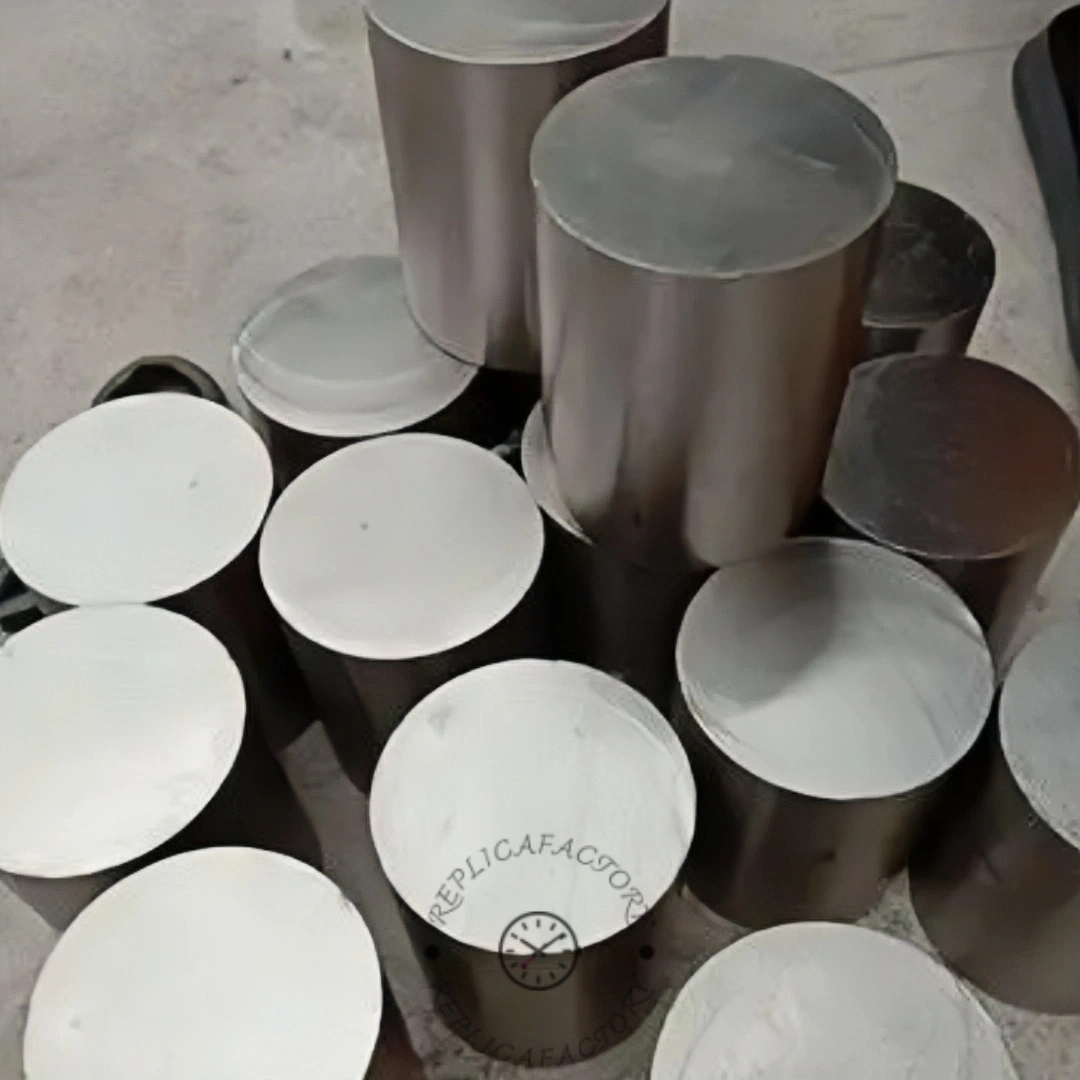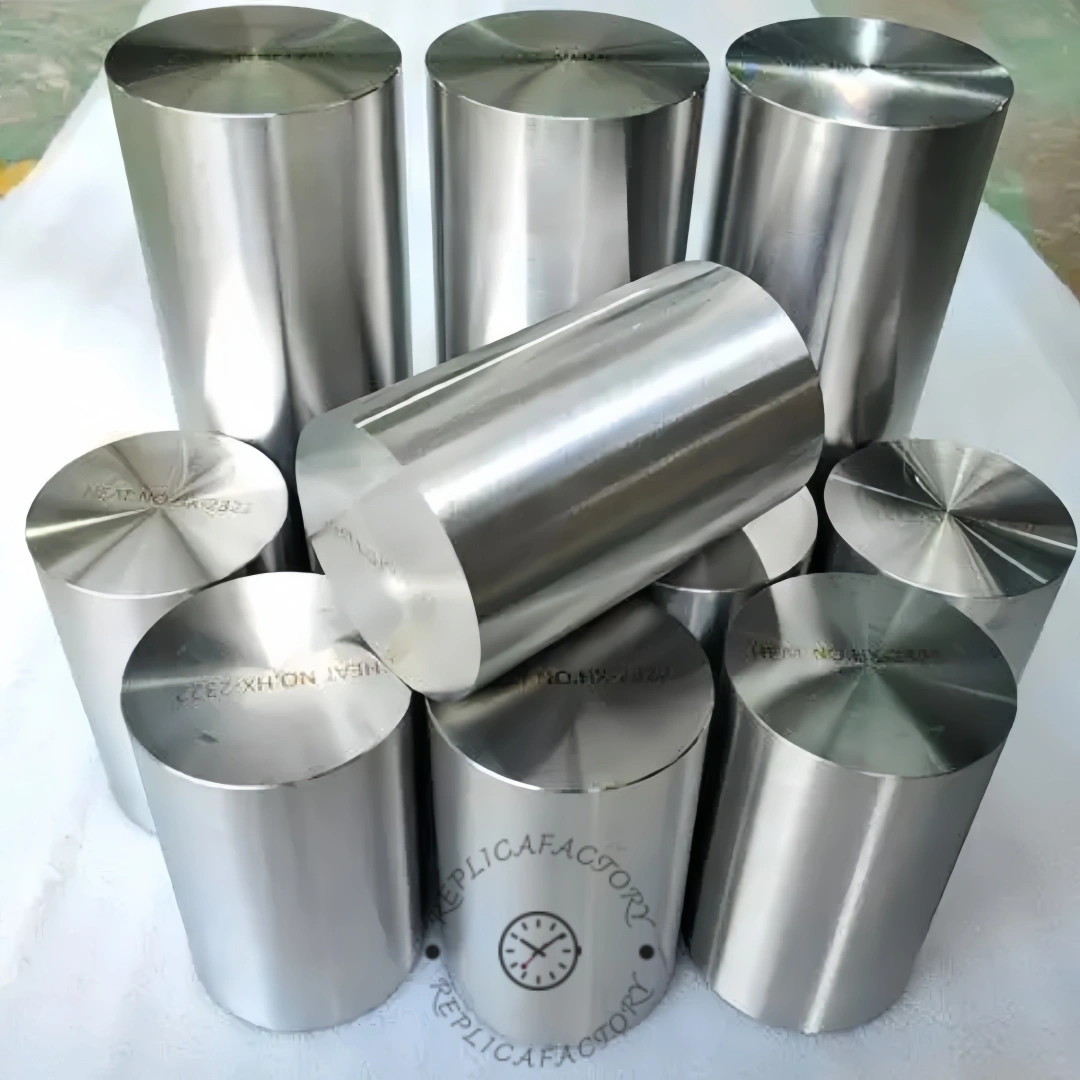Top Replica Watches Material Comparison: 904L Steel and Titanium
Directory Navigation
I. Test Background and Purpose
The manufacturing industry for replica watches selects 904L stainless steel and titanium as its primary case material selection. The test replicates challenging environmental scenarios to evaluate the corrosion resistance of these materials through scientific experiments against salt spray, acid and alkali solutions and high temperature and humidity conditions thus providing objective buying guidelines for replica watch consumers.
All test samples originate from standard materials found in mainstream replica watches and contain 19-23% chromium and 23-28% nickel and 4-5% molybdenum and 1-2% copper in their 904L steel composition while titanium consists of pure Grade 2 and Grade 5 titanium alloy.
II. Comparison of material properties
904L stainless steel
The replica watch industry refers to 904L steel as a Rolex patent steel substitute which exhibits the following characteristics.
- The density of 904L steel measures at 8.0g/cm³ which is heavier than 316L steel
- HV 220-250 is the hardness rating which can be increased through heat treatment processes.
- Corrosion resistance: high chromium content forms a dense oxide film
- Processing difficulty: poor cutting performance, large tool loss
- The price of 904L steel is around three times higher than 316L steel.
The material finds its primary application in creating high-end watch cases and bracelets for replica watches while maintaining a mirror polishing finish.

904L Steel
Titanium metal
Two specifications of titanium metal exist for use in replica watches:
- Pure titanium (Grade 2): density 4.5g/cm³, hardness HV 150-200
- Titanium alloy (Grade 5): includes 6% aluminum together with 4% vanadium and exhibits hardness levels between HV 300-350.
- Corrosion resistance: natural oxide film self-repairing ability
- Biocompatibility: medical grade safe material
- The material exhibits poor thermal conductivity and sticks easily to knives during processing.
The material serves lightweight applications in replica watches and features sandblasted or brushed finishes.

Titanium alloy
III. Test methods and environment
The testing duration reaches thirty days while samples receive equal mirror and sandblast treatments and the experiment includes three identical samples per test group.
Test item settings
| Test items | Test conditions | Test indicators |
|---|---|---|
| Salt spray test | 5% NaCl solution, continuous spray at 35℃ | Rust area rate, surface roughness change |
| Acid and alkali immersion | pH2 hydrochloric acid/pH12 Sodium hydroxide solution alternation | Weight loss, surface gloss |
| High temperature and high humidity | 85℃/85%RH constant environment | Oxide layer thickness, color difference ΔE |
| Abrasion test | 0000# steel wool 500g pressure friction | Scratch depth, gloss retention |
IV. Analysis of test results
1. Comparison of salt spray test
After 240 hours of salt spray test:
- 904L steel sample: trace rust spots appeared on the edge (<1% area), and the surface roughness Ra value increased from 0.05μm to 0.08μm
- Titanium metal sample: no visible signs of corrosion, the oxide layer thickened by about 2nm, and the surface roughness remained basically unchanged
2. Acid-base alternating test
After 30 acid-base cycles (4 hours each):
| Material | Weight loss (mg/cm²) | Gloss retention |
|---|---|---|
| 904L steel | 0.42±0.05 | 78% |
| Pure titanium | 0.15±0.03 | 92% |
| Titanium alloy | 0.08±0.02 | 95% |
3. Extreme temperature difference test
The titanium metal demonstrated superior dimensional stability in -20℃~80℃ rapid temperature changes and exhibited a thermal expansion coefficient that was only 60% that of 904L steel making it ideal for complex watch cases with multiple parts.
V. Conclusion and purchase recommendations
Comprehensive test results show that:
- Corrosion resistance: Titanium (especially titanium alloy) performs best in various corrosive environments, and 904L steel is durable enough in normal
- Daily maintenance: 904L steel is easier to polish and repair, and titanium scratch treatment requires professional equipment
- Wearing experience: Titanium is 40% lighter and suitable for large-sized watches.
- Cost considerations: 904L steel has a more traditional mechanical watch textureThe 904L steel version of high-end replica watches typically costs between 15-20% less than the titanium version
The recommended material for diving watches seeking maximum durability is titanium alloy while 904L steel represents an affordable option for those who want stainless steel appearance. Some low-end replica watches on the market use titanium coating technology instead of genuine titanium but consumers can verify their authenticity by using magnetic absorption tests and weight comparisons.

